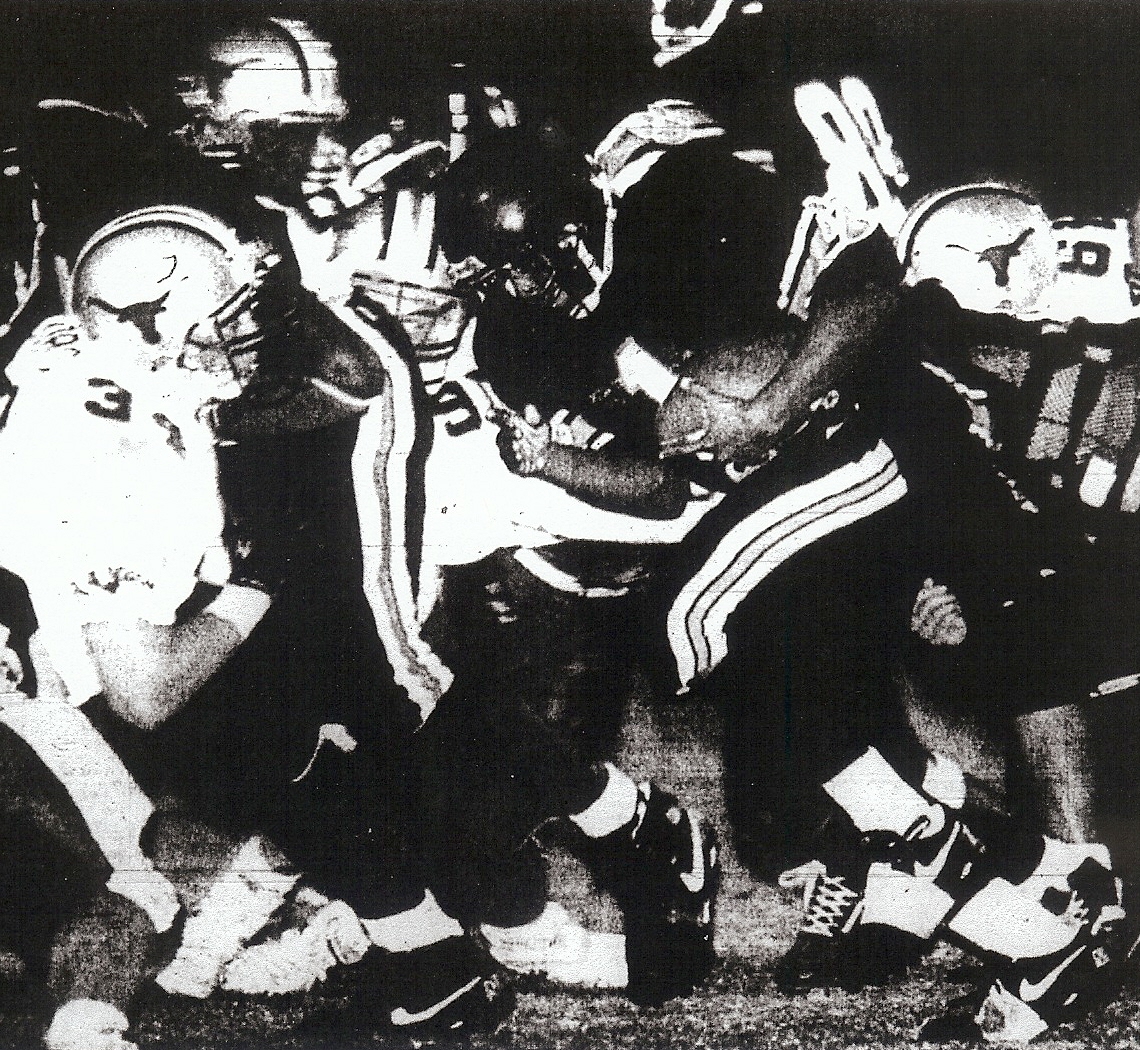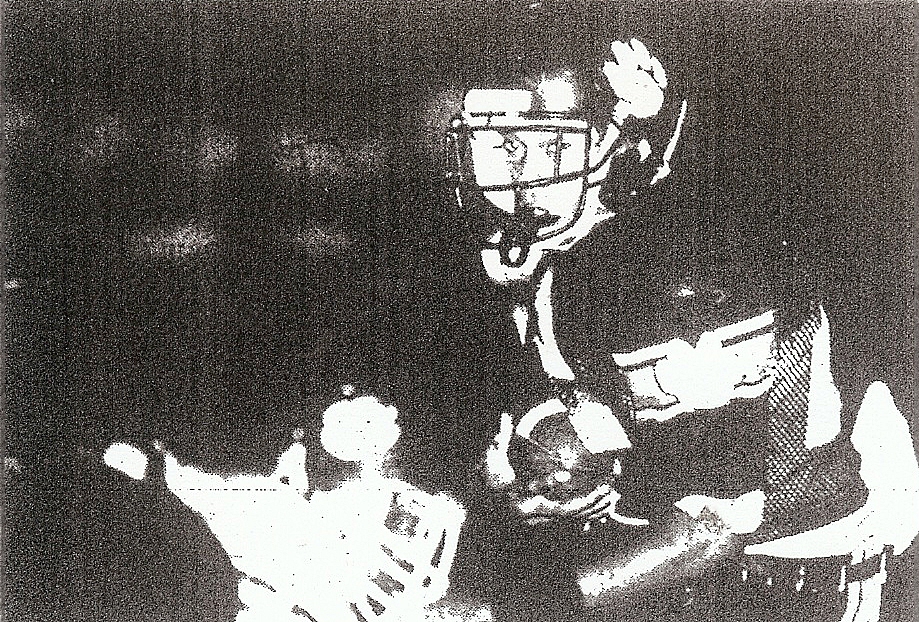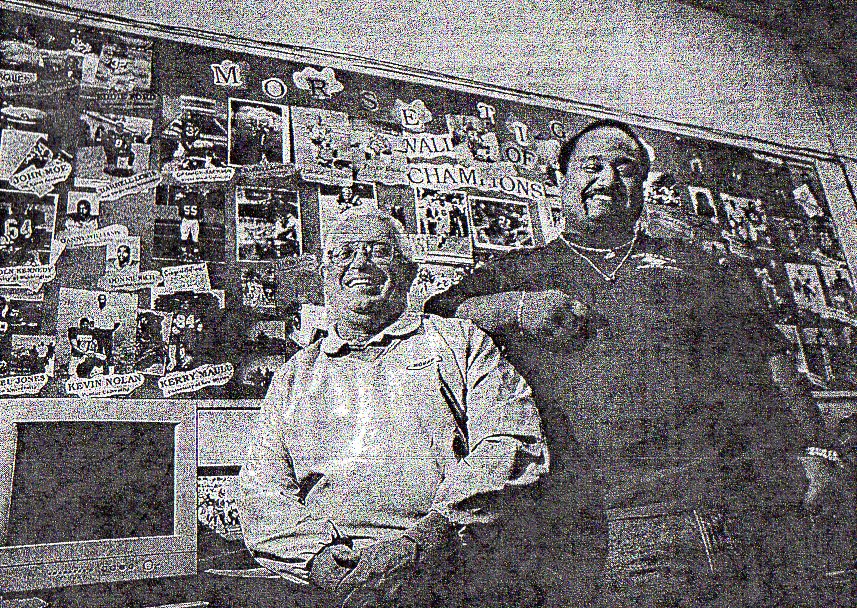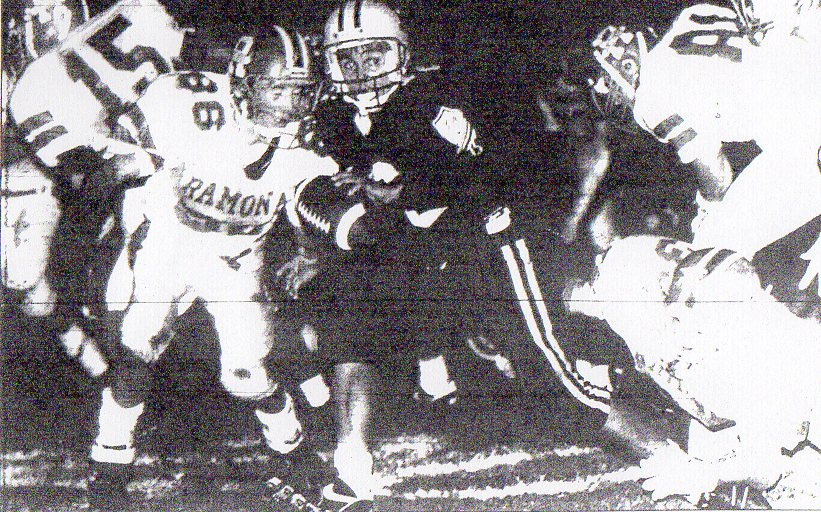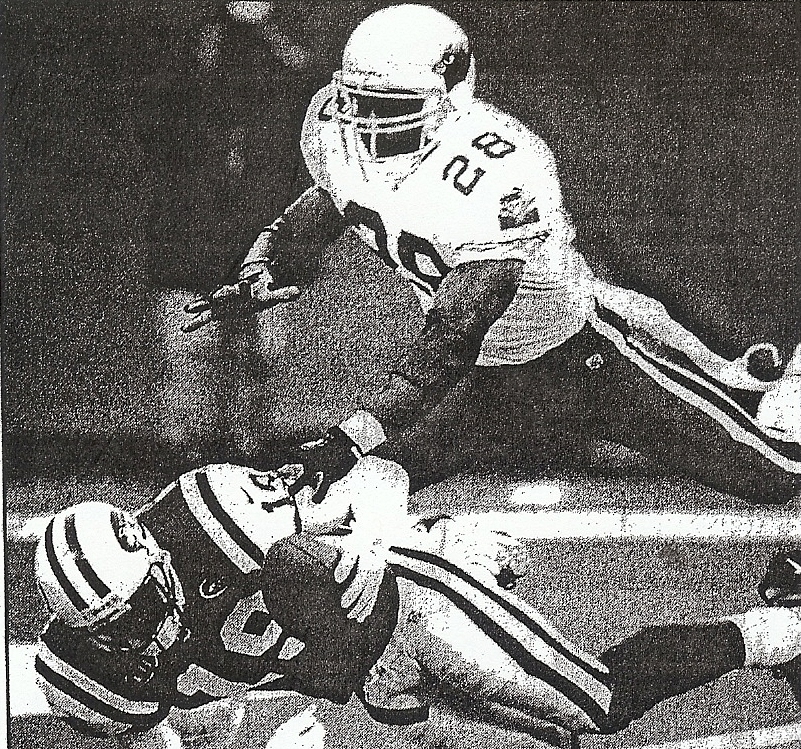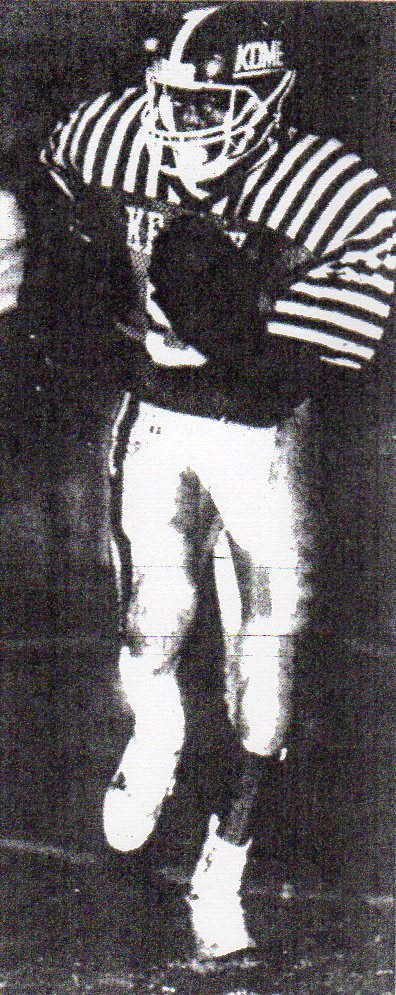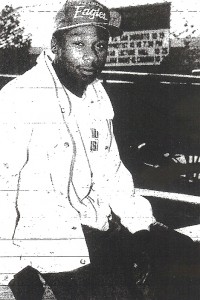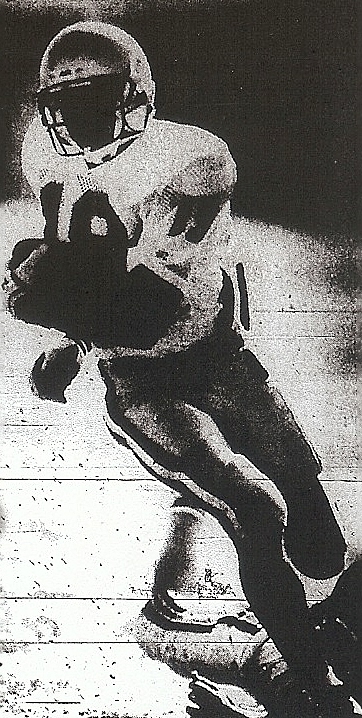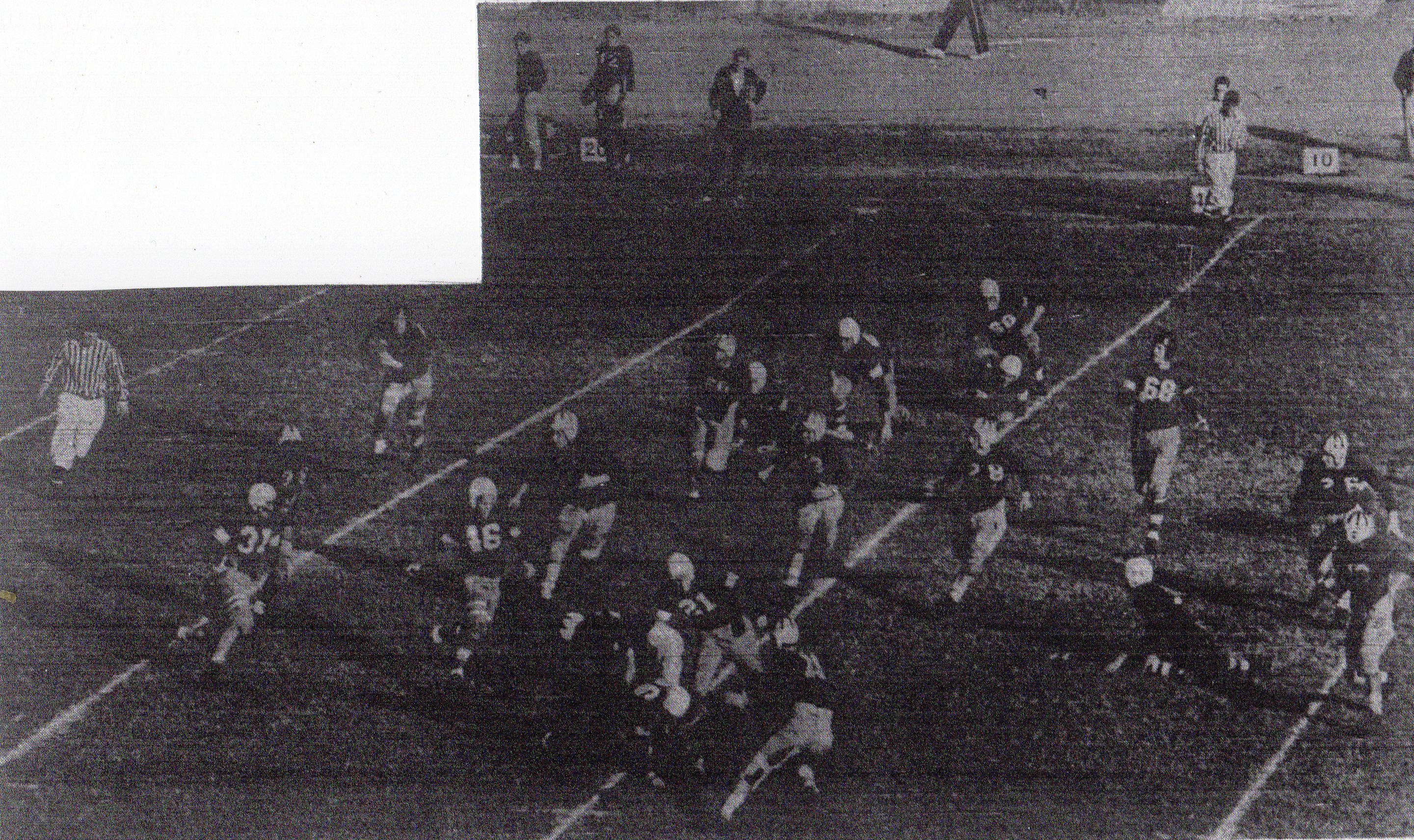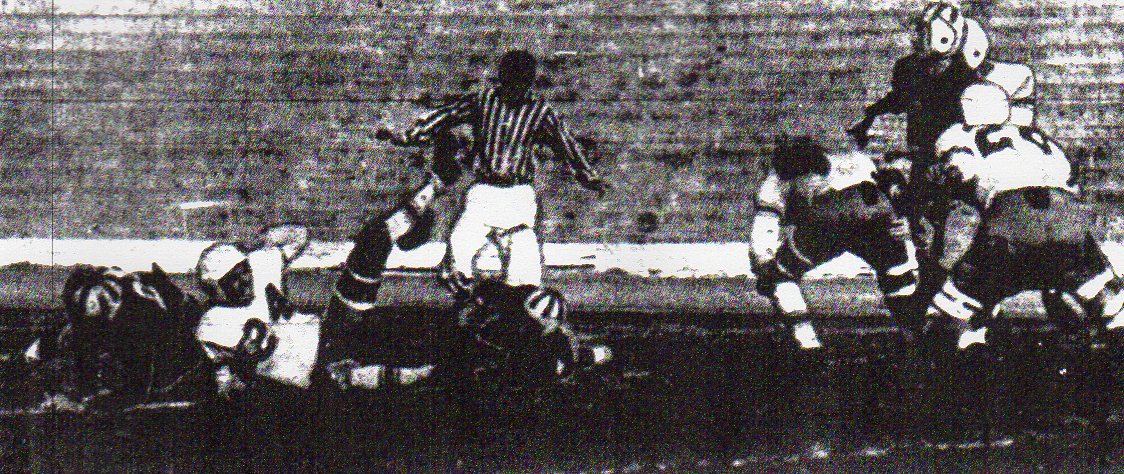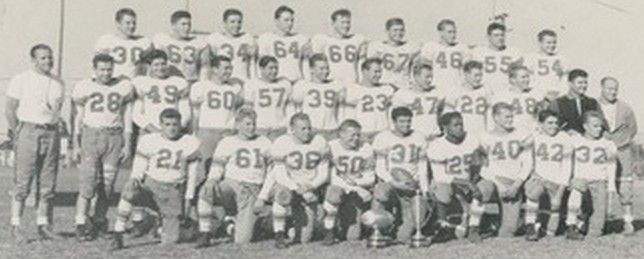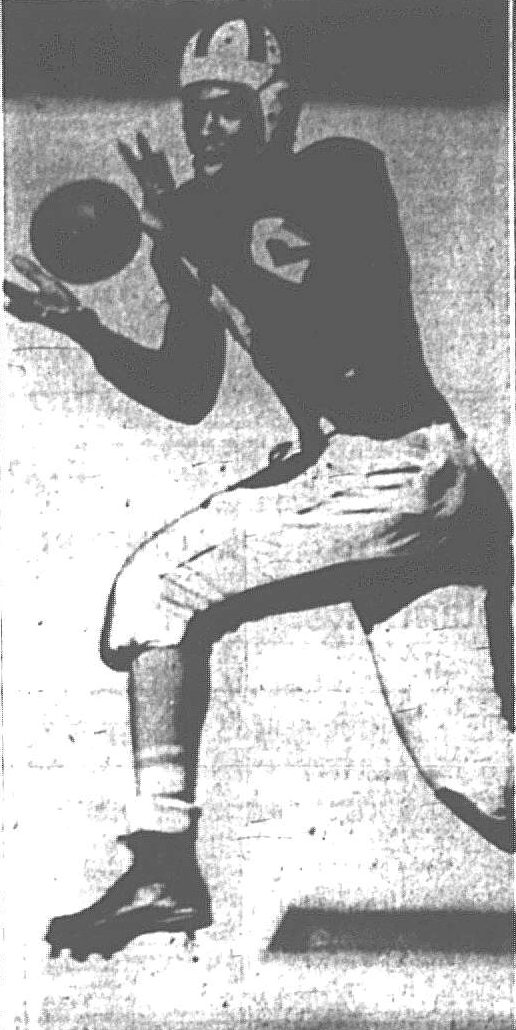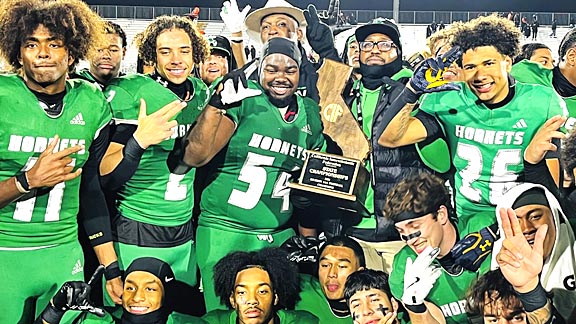1922, Looking Back: Student Gives Newspaper Inside Scoop
The narrative originally was posted Dec. 30, 2013.
San Diego High had an unusual relationship with The San Diego Union.
Student Alan McGrew, who also served in a business position as the “Temporary Football Manager of San Diego High School,” was the de facto Hilltoppers beat writer for the newspaper.
McGrew filed daily reports on the Hilltoppers, the headline sports attraction in the city. He provided inside information on coach John Perry’s team along with up-to-date messages on scheduling.
Who the Cavemen were playing and where often was the question of the day, as money guarantees were negotiated and games agreed to on virtually a moment’s notice.
McGrew’s access to the team was apparent on the pages of the Union:
—A player reported to be smoking on a downtown street and who admitted his “guilt” when quizzed before the entire team was suspended by coach John Perry for the opener with Sweetwater and lost half of his letter-earning, game quarters participation.
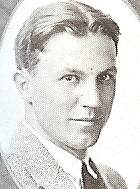
—Perry had established an 8 p.m., be-at-home curfew with retirement by not more than an hour later. The only evening players would be allowed to stay out “late” was after a game, when curfew would be at 10 p.m.
According to McGrew the team voted unanimously to abide by the Perry Rules. The third-year head man was 24, not much older than his players.
UNBEARABLE VICTORY
McGrew’s San Diego High bias also was obvious. The intrepid high school correspondent was one unhappy camper after the Hilltoppers’ 6-3 victory over Sweetwater in the season’s opening game.
Expecting a rout, McGrew was forced to acknowledge a stunningly difficult outing.
“The local players were taken off their feet by the county gang,” wrote McGrew. “They were dazed, it appeared.”
McGrew continued. “Possibly some of the players were unstrung, the game being the first of the season, and when they discovered the Sweetwater team had all kinds of power (they) went to pieces.”
Sweetwater had been 0-3 against the San Diego varsity, losing, 54-6 in 1915, 65-7 in ’20, and 40-0 in ’21.
Fullback Charles Williams drop-kicked a 25-yard field goal to give coach Herb Hoskins’ Red Devils a 3-0 lead early in the first quarter.

Norton Langford scored to put the Hilltoppers ahead, 6-3, later in the quarter, after which San Diego was stymied by the determined National City squad.
The following week, under a story without byline, the writer hadn’t yet moved on, still unhappy and describing the Sweetwater game as a “catastrophe”.
RED DEVILS NO PUSHOVERS
Sweetwater opened as National City School 1907 and, according to available records, played football in 1910.
For the first 11 years, including the 1913 season when they didn’t field a team, the Red Devils were 10-24-3, according to infrequent newspaper reports.
Herb Hoskins took over as coach in 1919 and was 5-9-2 in his first three seasons, but the Red Devils won the four-team County League with a 5-0-1 record this season and manned up once more in the playoffs against San Diego.

The Cavemen this time prevailed by a 13-6 score, but Sweetwater had established itself as a credible program.
The Red Devils were 34-16-5 under Hoskins from 1922-27 and made three playoff appearances.
NO ROOM FOR HERB?
Writer Jess Puryear pointed out that Hoskins apparently had not been considered after the Sweetwater mentor showed interest in filling a position that opened on the San Diego coaching staff.
Hilltoppers basketball coach A.E. Shaver had left after the 1921-22 school year.
RESEMBLING EARLY MAN
San Diego High historian Don King corrected a story which promoted many different versions over the years.
How did the name Cavemen evolve?
In 1921 the football team dressed in dingy quarters beneath the 400 building on campus, King wrote in Caver Conquest, the 1993 history of San Diego High athletics.
There was only one entrance to the dressing room and that was through a long, dark tunnel that supposedly looked like that of a passageway to the caves used by our earliest ancestors, King noted.
Alden Ross, a reporter for the school newspaper (and a future member of the 1922 squad), was standing outside the players’ entrance when the squad exited for a game and was struck by the similarity to cave dwellers of the past.
Ross referred to the “Cavemen” in the next issue of The Russ.
“Cavemen” caught on and was used thereafter along with “Hilltoppers”, “Hillers”, and “Cavers.”
When girls began participating in the 1970s, the name was officially amended to “Cavers,” to correct gender inequity, said King.
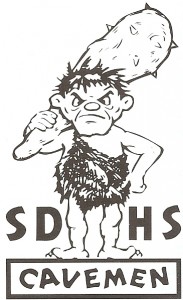
PREGAME HYPE?
USC Freshmen coach H.W. Hess, responding when asked in a telephonic interview with San Diego writers if there were “any stars who have been showing up” on the Trobabes’ squad:
“There are no stars, but eleven men on the team…and they’re all rotten,” declared the coach.
San Diego coach John Perry said he expected his squad “to be fighting all through the game (but) I do expect to be beaten by more than forty points.”
Interest in the USC team was such that the frosh’s pregame meal was assessed: two poached eggs and a cup of tea.
The frosh, featuring many 1921 prep stars from throughout the state, prevailed, 21-0.
THE LONGEST TRIP
According to one writer, 19 players and two coaches traveled for a game to Bakersfield by automobile.
Certainly more than one automobile, although Alan McGrew wrote that the team was scheduled to leave at 8 a.m. on a Friday morning for an 11-hour trip by “stage”.
Travel would include 48 miles on what was known as the Ridge Route, beginning at the Castaic Junction and featuring switchbacks and sudden turns over the mountains north of Los Angeles.
Climax to this sometimes dangerous stretch was the Grapevine, a six-mile downgrade that took travelers from 4,233 feet to the floor of the San Joaquin Valley, passing native grapevines growing on the hills near Fort Tejon.
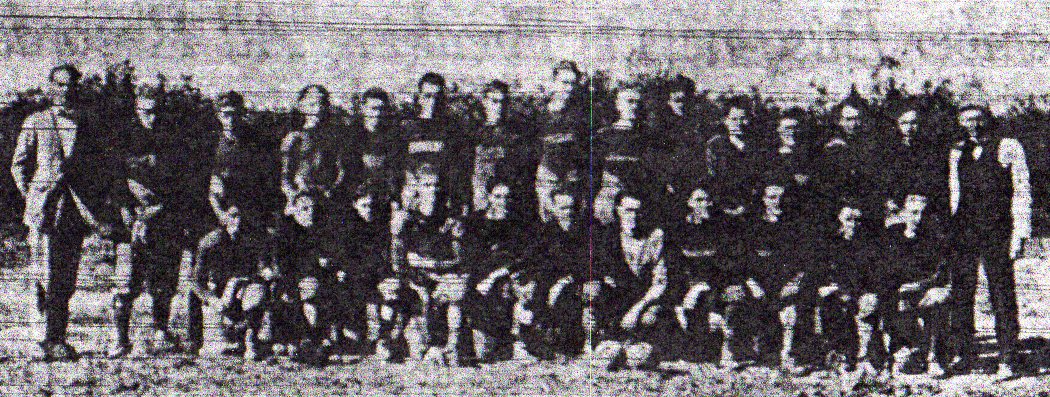
WHY?
In this still developing period of motorized conveyance (passenger railroad travel then or now was not available to or from Bakersfield), why schedule a game so distant and so difficult to reach?
Alan McGrew pointed out that “almost every school south of the Tehachapi pass had received letters seeking games from Hilltop management, but refused.”
San Diego High was feared in the North, particularly around Los Angeles, said McGrew. Scheduling the defending state champion Drillers would curtail some of the criticism about Perry’s perceived reluctance to schedule strong opponents.
There was some history with Bakersfield. The Hilltoppers declined an invitation to play a state championship playoff with the Drillers after San Diego had posted 12-0 record and won the Southern Section championship in 1916.
Hilltop coach Clarence (Nibs) Price sensed his team was fatigued and was not interested in a New Year’s Day game in San Diego. The Drillers claimed the state championship and that San Diego had forfeited.
Price did schedule the Drillers in 1917, when the school known as Kern County Union High came south and was beaten by the Hilltoppers, 18-7.
This year’s result was different. Dwight (Goldie) Griffith’s Drillers, who were rumored to play some adult roughnecks from the neighboring oil fields, scored a 32-0 victory.
Age limits were seemingly flexible and nonexistent. San Diego’s outstanding lineman was Al Scheving, who would be 21 when he graduated in June, 1923.
“I was only eighteen months older than my team captain,” coach John Perry told writer Jim Trinkle in 1954.
TWO GAMES IN TWO DAYS
Without a league and of independent classification, San Diego was required to have five victories against high school competition for inclusion in the CIF Southern Section playoffs.
Scheduling was madcap.
With the SCIF postseason beginning in a week, the Cavemen were pressed to play two high school games in two days.
John Perry shrugged when it was suggested that no prep team in California had ever been asked to meet such a challenge.
The Hilltoppers teed up at 9:15 a.m. Friday in City Stadium, where they defeated the 7-2 Whittier Cardinals, 26-0, then followed at 12:30 the next afternoon with a 41-0 victory over weak Anaheim, against which Perry employed only four varsity starters.
Students were all for the doubleheader. They were dismissed from school Friday to watch the games.
The Hilltoppers were fortunate not to have to travel for the Anaheim contest, which originally was scheduled in the northern community but was moved to San Diego because of an Armistice Day parade in Anaheim.
HOW MANY GAMES?
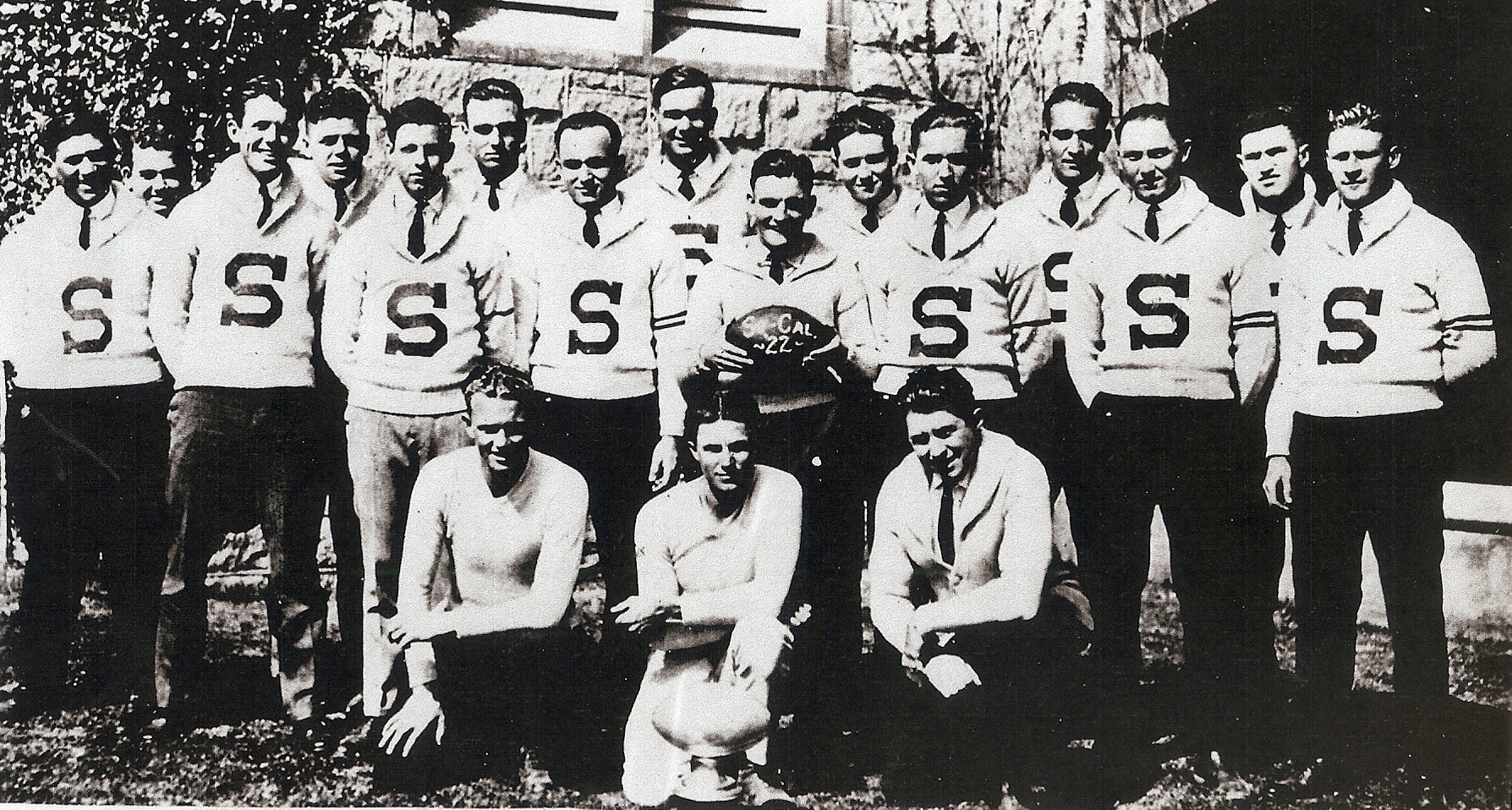
HOW MANY GAMES?
Don King’s Caver Conquest listed 14 games on San Diego High’s schedule, as did the first Evening Tribune Prep Football Record Book, published in 1965.
According to The San Diego Union of November 30, 1922, the Cavemen had played 17 games and, after meeting Santa Ana, Gardena and Bakersfield, would finish the season with a stunning total of 20, their record being 14-5-1.
NFL teams don’t play that many, unless they’re a wildcard team that plays in the Super Bowl.
The line between scrimmages and games was blurred in The San Diego Union.
A midseason exercise with Sweetwater was loosely described as a game but also as a “practice.” Nonleague, not yet a part of the lexicon, would have been a better description.
The Cavemen played five “games” with teams from military institutions and seven “games” in 13 days from late September to early October.
Games with military squads were common for San Diego-area teams.
COEDS SHUN HILLTOPPERS
San Diego’s playoff with Santa Ana matched not-so-friendly rivals in a series that dated to 1905. The Cavemen claimed the Orange County school’s students and players were the poorest losers in the state.
“Besides ‘razzing’ the players on the street and at the hotel where the team was lodged, the girls at a public dance in Santa Ana refused to dance with the San Diego boys,” reported Alan McGrew.
According to historian Don King, “Santa Ana fans threw soda pop bottles and ripe fruit as Kenny Zweiner ran 65 yards with an intercepted pass for a touchdown.”
Coney Galindo raced 35 yards for another score in a 12-0 victory. The winners rushed for 112 yards, Galindo leading with 50 yards rushing and completing a 17-yard pass.
The win over Santa Ana elevated San Diego into a Southern Section championship game against Gardena.
ROCKY TOP
Perry remembered years later what it was like to practice on the “Rock Pile,” and to play on a dirt surface in City Stadium.
“We weren’t allowed to practice in the stadium, but had to go across the highway by the horse barns,” said Perry. “Before working out we’d try to get all the rocks we’d kicked up the previous day out of the way.”
The stadium layout would be sprinkled, then rolled before each game. “There wasn’t any grass and it was as hard as concrete,” remembered the coach.
SCHOOL DAYS, SCHOOL DAYS!

San Diego High pupils paid student dues of .75, plus they were required to make a $4 deposit to assure return of textbooks at the end of the school year.
Students were required to purchase locker padlocks that were available from San Diego merchants.
Incoming freshmen received a 128-page “manual”, detailing all activities and regulations at the school.
National City School, renamed Sweetwater, moved to a new location on Highland Avenue at the South end of National City, serving approximately 325 students from Chula Vista and to as far south as San Ysidro.
Construction of Grossmont’s permanent campus on the hill overlooking El Cajon Valley was almost complete, with 350 students listed as having enrolled.
Two-pant tweed sports suits were available for $19.65, Shoes for $6.50, and caps for $2.50 at Lion Clothing Co., Fifth Avenue at E Street.
THERE WERE PERKS
Prospective San Diego High players were feted in a banquet at the San Diego Hotel the night before the first practice.
Team leader Norton Langford addressed the players on the “value of close association and the necessity for no petty jealousy” (apparently a problem the last couple seasons, along with questions of soft scheduling and Perry’s not coaching “fundamentals”).
Langford said he hoped to “see a game up North” at the end of the season “for the state championship and with San Diego returning victorious.”
CART BEFORE HORSE
San Diego players favored a rematch in the state playoffs with Bakersfield, rather than participate in a so-called national championship game.
The Cavers received challenges from the Amarillo Golden Sandstorm of Texas, Twin Falls, Idaho, and a team in St. Louis. Coach John Perry postponed any decision until after the Gardena contest.

LOVE THAT GRASS
Gardena, which won at Bishop, 31-0, the week before, was accorded an edge by the San Diego media because it had played on the Bovard Field turf gridiron at USC.
Whatever advantage Gardena possessed disappeared in the fourth quarter, when the Cavemen trailing, 14-12, scored 19 points to win, 31-14. Coney Galindo ran for three touchdowns and scored another on an intercepted pass.
HERE COME THE DRILLERS
San Diego accepted a challenge to play 9-0-1 Bakersfield in a state playoff, but only if the game was played in the City Stadium. In a telegram to Bakersfield officials, McGrew said the Cavemen were “not in condition for another trip.”
The Drillers agreed.
The journey south was easier on the visitors, who were reported to have “passed through Los Angeles” and were spending the night in Santa Ana after practicing at Whittier College.
Transported in two motor coaches, Bakersfield arrived in San Diego on the day of the game.
The Cavemen battled in vain before about 6,000 City Stadium fans who represented the largest turnout in school history, according to the Union, although the 1917 game drew a reported 10,000.

It was 17-0 before Ed Ruffa scored a touchdown in the final two minutes to send the Hilltoppers home 17-6 losers.
READ IT AND WEEP
That was the lede (first paragraph) on The San Diego Union account of the Cavemen’s 106-6 victory over Army-Navy. The writer also suggested that flags would be at half mast at the Pacific Beach academy.
Nothing out of the ordinary about that, but in the second paragraph it was noted that the Cadets fully expected to win and to qualify for the Southern California playoffs!
Coach Paul Jones, who exuded such confidence before the game, was slightly off the mark.
Contributing to the carnage was a rule of the day: Teams scoring touchdowns received the ensuing kickoff, i.e., Army-Navy kicked off after every San Diego touchdown.
SIGNS OF THE TIMES
Future World War II hero aviator Lt. James Doolittle left Jacksonville, Florida, at 7:30 p.m. Pacific time and hoped to land at Rockwell Field, located on Coronado’s North Island, at about 4 p.m. the next afternoon.
The 18 1/2-hour flight included a fuel stop in San Antonio, Texas.
TRUE GRID
San Diego High dropped its ninth-grade, freshmen class when two junior highs, Roosevelt and Memorial, opened…the schools had grades of 7, 8, and 9…by contract with the CIF and Santa Ana, expenses were provided for 18 players when the Cavemen took the train north for the second of three semifinal playoff contests, but coach John Perry traveled a squad of 23… San Diego High was not the only team to play games on back-to-back days…Grossmont sustained a 40-7 loss to the Hilltoppers, then went out the next day and dropped a 7-6 decision to the sailors from the U.S.S. Rapahannock…when writers referred to a team concentrating on its ground game, it was described as “straight football”…passing, infrequently used, was just that, “passing”…The San Diego Union published the roster of San Diego High and players’ numbers before the game with the USC Freshmen…24 players were numbered from 1 to 25, with only jersey No. 2 omitted… …Escondido was greeting “a whole set of husky Indians from the backcountry,” according to the Union… County League teams Escondido, Sweetwater, and Grossmont were considered “backcountry”…”The Winning Play,” an article that appeared in Redbook magazine, was read to the team by San Diego coach John Perry before it took the field against Gardena…Sweater and Letter Day at Sweetwater was attended by the entire student body, which honored the County League team as Herb Hoskins awarded monograms to 15 players….

